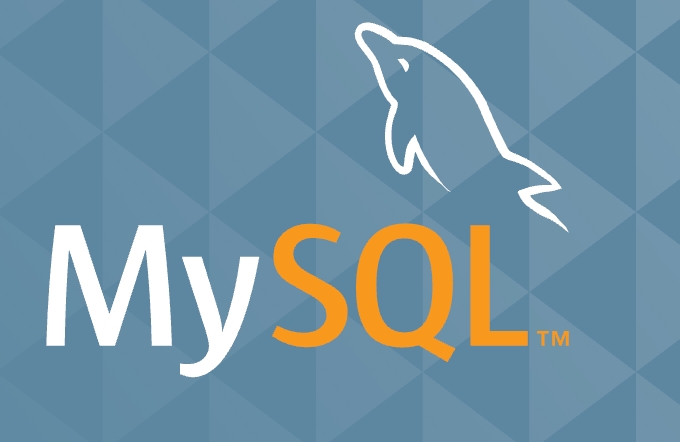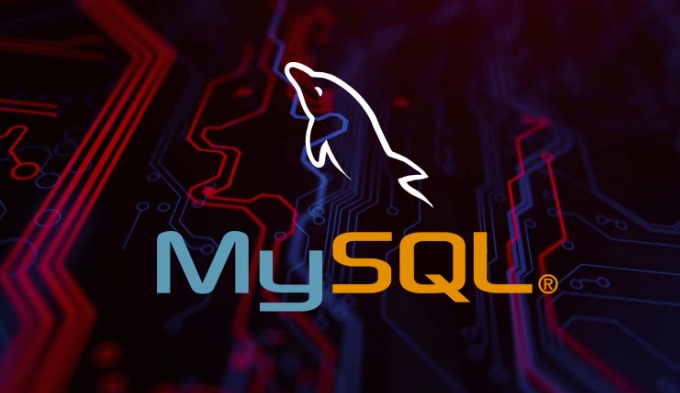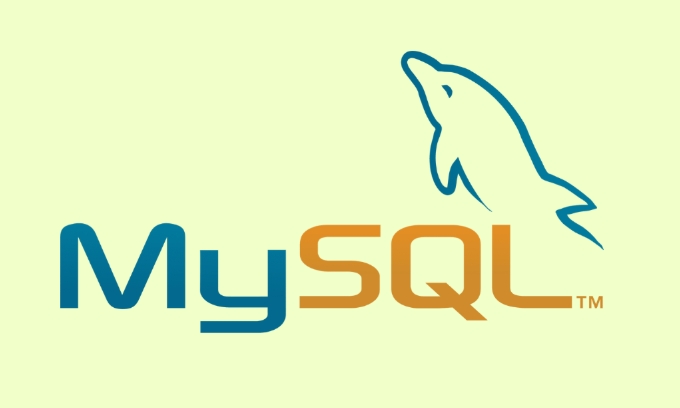The steps to install MySQL server on Linux include confirming the system environment, selecting the installation source, executing installation commands, and initializing settings. First, update the system software package, Ubuntu uses apt update && apt upgrade, CentOS uses yum update; secondly, add official source options, Ubuntu downloads and installs the mysql-apt-config package and updates the source list, and CentOS installs the official rpm package; then executes the installation through apt install mysql-server or yum install mysql-server; then starts the service and sets the boot boot, runs the mysql_secure_installation script for secure configuration; finally pay attention to root login permissions, firewall port opening, and disk space. The entire process needs to be followed by steps and ensure that the network and permissions are configured correctly.

Installing a MySQL server on Linux is not too difficult, but for beginners, they may encounter some confusion in source selection and configuration steps. This article will take you through the installation process step by step and explain some common precautions.

Preparation: Confirm the system and network environment
Before you begin, make sure your Linux system has been updated to the latest status and has access to the Internet normally. Different distributions have slightly different installation methods. Here we take the common Ubuntu and CentOS as examples.

- Update the system package:
- Ubuntu:
sudo apt update && sudo apt upgrade - CentOS:
sudo yum update
- Ubuntu:
In addition, it is recommended to use a user with administrator privileges to perform the installation operation to avoid permission problems.
Installation method selection: use the official source or the default repository?
MySQL is available in the default repository for most Linux distributions, but the version may not be the latest. If you need the latest features or patches, it is recommended to use the APT or YUM source provided by MySQL.

Steps to add official source for Ubuntu users:
- Download the publishing package:
wget https://dev.mysql.com/get/mysql-apt-config_0.8.22-1_all.deb - Install source configuration package:
sudo dpkg -i mysql-apt-config_*_all.deb - Update source list:
sudo apt update
CentOS users can add official sources through the following command:
sudo rpm -Uvh https://dev.mysql.com/get/mysql80-community-release-el7-7.noarch.rpm
After the addition is complete, you can use yum or apt to install the MySQL server.
Installation and Initialization Settings
The installation process itself is very simple, and only one command is required:
- Ubuntu:
sudo apt install mysql-server - CentOS:
sudo yum install mysql-server
After the installation is complete, start the service and set the power-on self-start:
- Start the service:
sudo systemctl start mysqld - Set up startup:
sudo systemctl enable mysqld
At this time, you also need to run a secure initialization script to improve database security:
sudo mysql_secure_installation
This script will let you set the root password, remove anonymous users, disable remote root login, etc. It is recommended to select "Yes" all the way.
Note: Some systems (such as Ubuntu) will automatically create a local root user without password during the installation process. You can enter it with
sudo mysqlwhen logging in for the first time. Remember to modify the password and configure remote access permissions later.
Frequently Asked Questions and Precautions
Several of the most common problems during installation include:
- Unable to connect to MySQL service : Check if the service is started:
systemctl status mysqld - root login failed : it may be because of the password incorrect or the authentication method is incorrect. You can try to use
sudo mysqlto log in and modify your password. - The port is blocked by the firewall : If you want to access MySQL from the outside, the default port is 3306. Make sure that the firewall allows the port to communicate.
- Insufficient disk space or permissions issues : The default data directory of MySQL is
/var/lib/mysql, ensuring that the partition has sufficient space and correct permissions.
If you are installing on a cloud server, don't forget to set security group rules in the console to allow external IP to access the database port.
Basically that's it. Although the whole process seems a bit too many, as long as you operate step by step, there will generally be no major problems.
The above is the detailed content of How to Install MySQL Server on Linux. For more information, please follow other related articles on the PHP Chinese website!

Hot AI Tools

Undress AI Tool
Undress images for free

Undresser.AI Undress
AI-powered app for creating realistic nude photos

AI Clothes Remover
Online AI tool for removing clothes from photos.

Clothoff.io
AI clothes remover

Video Face Swap
Swap faces in any video effortlessly with our completely free AI face swap tool!

Hot Article

Hot Tools

Notepad++7.3.1
Easy-to-use and free code editor

SublimeText3 Chinese version
Chinese version, very easy to use

Zend Studio 13.0.1
Powerful PHP integrated development environment

Dreamweaver CS6
Visual web development tools

SublimeText3 Mac version
God-level code editing software (SublimeText3)

Hot Topics
 How to install MySQL 8.0 on Windows/Linux?
Jun 11, 2025 pm 03:25 PM
How to install MySQL 8.0 on Windows/Linux?
Jun 11, 2025 pm 03:25 PM
The key to installing MySQL 8.0 is to follow the steps and pay attention to common problems. It is recommended to use the MSI installation package on Windows. The steps include downloading the installation package, running the installer, selecting the installation type, setting the root password, enabling service startup, and paying attention to port conflicts or manually configuring the ZIP version; Linux (such as Ubuntu) is installed through apt, and the steps are to update the source, installing the server, running security scripts, checking service status, and modifying the root authentication method; no matter which platform, you should modify the default password, create ordinary users, set up firewalls, adjust configuration files to optimize character sets and other parameters to ensure security and normal use.
 How to enable SSL/TLS encryption for MySQL connections?
Jun 11, 2025 pm 03:29 PM
How to enable SSL/TLS encryption for MySQL connections?
Jun 11, 2025 pm 03:29 PM
Enable MySQL's SSL/TLS encryption connection can effectively prevent data leakage. The specific steps are as follows: 1. Confirm that the MySQL version supports SSL, and check whether the return value is YES through SHOWVARIABLESLIKE'have_ssl'; 2. Prepare a PEM format certificate file (ca.pem, server-cert.pem, server-key.pem), which can be generated through OpenSSL or obtained from CA; 3. Modify the MySQL configuration file, add ssl-ca, ssl-cert and ssl-key paths in the [mysqld] section and restart the service; 4. Force the client to use SSL, and use CREATEUSER
 What is the default username and password for MySQL?
Jun 13, 2025 am 12:34 AM
What is the default username and password for MySQL?
Jun 13, 2025 am 12:34 AM
The default user name of MySQL is usually 'root', but the password varies according to the installation environment; in some Linux distributions, the root account may be authenticated by auth_socket plug-in and cannot log in with the password; when installing tools such as XAMPP or WAMP under Windows, root users usually have no password or use common passwords such as root, mysql, etc.; if you forget the password, you can reset it by stopping the MySQL service, starting in --skip-grant-tables mode, updating the mysql.user table to set a new password and restarting the service; note that the MySQL8.0 version requires additional authentication plug-ins.
 What is the MySQL binary log (binlog) and what is it used for?
Jun 11, 2025 pm 03:41 PM
What is the MySQL binary log (binlog) and what is it used for?
Jun 11, 2025 pm 03:41 PM
MySQL's binary log (binlog) is a binary log that records database change operations, and is used in scenarios such as data recovery, master-slave replication and auditing. 1. Binlog is a logical log file that records all operation events that modify data, such as INSERT, UPDATE, DELETE, etc., but does not include SELECT or SHOW query statements; 2. Its main uses include: data recovery through replay logs, supporting master-slave copying to achieve data synchronization, and used to analyze operation records to meet audit requirements; 3. Enable binlog requires setting log-bin, server-id, binlog_format and expire_logs_day in the configuration file.
 How to change or reset the MySQL root user password?
Jun 13, 2025 am 12:33 AM
How to change or reset the MySQL root user password?
Jun 13, 2025 am 12:33 AM
There are three ways to modify or reset MySQLroot user password: 1. Use the ALTERUSER command to modify existing passwords, and execute the corresponding statement after logging in; 2. If you forget your password, you need to stop the service and start it in --skip-grant-tables mode before modifying; 3. The mysqladmin command can be used to modify it directly by modifying it. Each method is suitable for different scenarios and the operation sequence must not be messed up. After the modification is completed, verification must be made and permission protection must be paid attention to.
 What is GTID (Global Transaction Identifier) and what are its advantages?
Jun 19, 2025 am 01:03 AM
What is GTID (Global Transaction Identifier) and what are its advantages?
Jun 19, 2025 am 01:03 AM
GTID (Global Transaction Identifier) ??solves the complexity of replication and failover in MySQL databases by assigning a unique identity to each transaction. 1. It simplifies replication management, automatically handles log files and locations, allowing slave servers to request transactions based on the last executed GTID. 2. Ensure consistency across servers, ensure that each transaction is applied only once on each server, and avoid data inconsistency. 3. Improve troubleshooting efficiency. GTID includes server UUID and serial number, which is convenient for tracking transaction flow and accurately locate problems. These three core advantages make MySQL replication more robust and easy to manage, significantly improving system reliability and data integrity.
 What is a typical process for MySQL master failover?
Jun 19, 2025 am 01:06 AM
What is a typical process for MySQL master failover?
Jun 19, 2025 am 01:06 AM
MySQL main library failover mainly includes four steps. 1. Fault detection: Regularly check the main library process, connection status and simple query to determine whether it is downtime, set up a retry mechanism to avoid misjudgment, and can use tools such as MHA, Orchestrator or Keepalived to assist in detection; 2. Select the new main library: select the most suitable slave library to replace it according to the data synchronization progress (Seconds_Behind_Master), binlog data integrity, network delay and load conditions, and perform data compensation or manual intervention if necessary; 3. Switch topology: Point other slave libraries to the new master library, execute RESETMASTER or enable GTID, update the VIP, DNS or proxy configuration to
 How to alter a large table without locking it (Online DDL)?
Jun 14, 2025 am 12:36 AM
How to alter a large table without locking it (Online DDL)?
Jun 14, 2025 am 12:36 AM
Toalteralargeproductiontablewithoutlonglocks,useonlineDDLtechniques.1)IdentifyifyourALTERoperationisfast(e.g.,adding/droppingcolumns,modifyingNULL/NOTNULL)orslow(e.g.,changingdatatypes,reorderingcolumns,addingindexesonlargedata).2)Usedatabase-specifi






